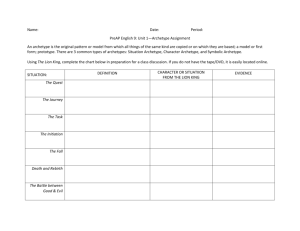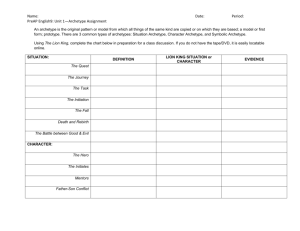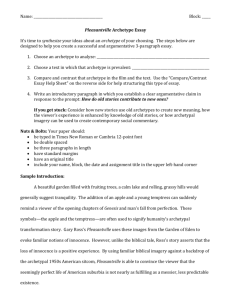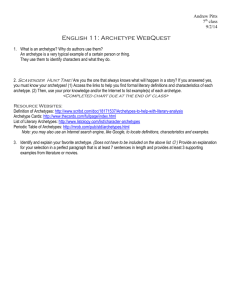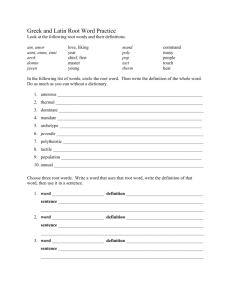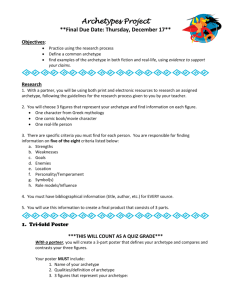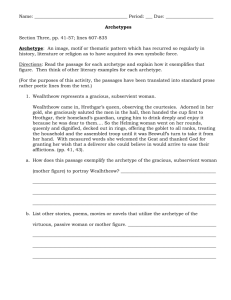Group project description and contract
advertisement
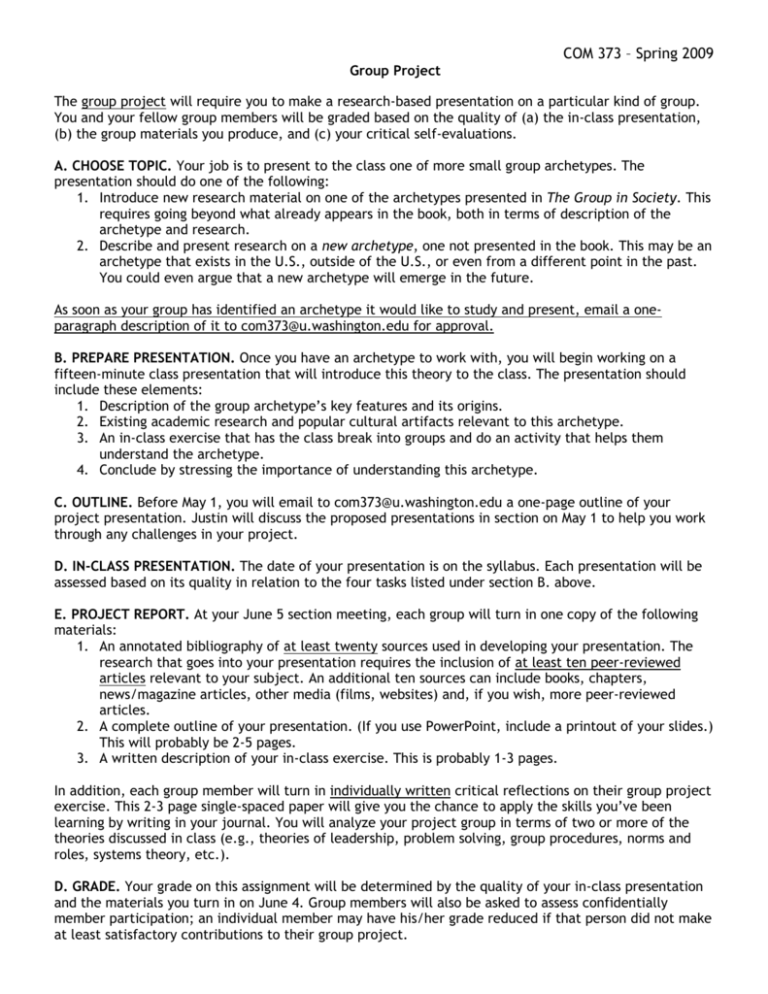
COM 373 – Spring 2009 Group Project The group project will require you to make a research-based presentation on a particular kind of group. You and your fellow group members will be graded based on the quality of (a) the in-class presentation, (b) the group materials you produce, and (c) your critical self-evaluations. A. CHOOSE TOPIC. Your job is to present to the class one of more small group archetypes. The presentation should do one of the following: 1. Introduce new research material on one of the archetypes presented in The Group in Society. This requires going beyond what already appears in the book, both in terms of description of the archetype and research. 2. Describe and present research on a new archetype, one not presented in the book. This may be an archetype that exists in the U.S., outside of the U.S., or even from a different point in the past. You could even argue that a new archetype will emerge in the future. As soon as your group has identified an archetype it would like to study and present, email a oneparagraph description of it to com373@u.washington.edu for approval. B. PREPARE PRESENTATION. Once you have an archetype to work with, you will begin working on a fifteen-minute class presentation that will introduce this theory to the class. The presentation should include these elements: 1. Description of the group archetype’s key features and its origins. 2. Existing academic research and popular cultural artifacts relevant to this archetype. 3. An in-class exercise that has the class break into groups and do an activity that helps them understand the archetype. 4. Conclude by stressing the importance of understanding this archetype. C. OUTLINE. Before May 1, you will email to com373@u.washington.edu a one-page outline of your project presentation. Justin will discuss the proposed presentations in section on May 1 to help you work through any challenges in your project. D. IN-CLASS PRESENTATION. The date of your presentation is on the syllabus. Each presentation will be assessed based on its quality in relation to the four tasks listed under section B. above. E. PROJECT REPORT. At your June 5 section meeting, each group will turn in one copy of the following materials: 1. An annotated bibliography of at least twenty sources used in developing your presentation. The research that goes into your presentation requires the inclusion of at least ten peer-reviewed articles relevant to your subject. An additional ten sources can include books, chapters, news/magazine articles, other media (films, websites) and, if you wish, more peer-reviewed articles. 2. A complete outline of your presentation. (If you use PowerPoint, include a printout of your slides.) This will probably be 2-5 pages. 3. A written description of your in-class exercise. This is probably 1-3 pages. In addition, each group member will turn in individually written critical reflections on their group project exercise. This 2-3 page single-spaced paper will give you the chance to apply the skills you’ve been learning by writing in your journal. You will analyze your project group in terms of two or more of the theories discussed in class (e.g., theories of leadership, problem solving, group procedures, norms and roles, systems theory, etc.). D. GRADE. Your grade on this assignment will be determined by the quality of your in-class presentation and the materials you turn in on June 4. Group members will also be asked to assess confidentially member participation; an individual member may have his/her grade reduced if that person did not make at least satisfactory contributions to their group project. COM 373 – Spring 2009 Creating a Group Contract For this activity, you will get together with the other members of your project group and work out a group contract that describes their goals for your group and the guidelines that you will follow in your work together. During the discussion, you might bring up: Past experiences in groups that have shaped your thinking about what group members should and shouldn’t do Your personal goals and work habits in groups Your pet peeves involved in working with groups The other obligations they have during this academic term that may affect your group work Your hopes for this work group during this academic term There should be two outcomes of their discussion—a single mission statement and contract signed by every member of your group. The first is a group mission statement or charter, which describes your group’s shared goal. This should be a one or two sentence description of what your group wants to accomplish and what is important to them as a group. Below the charter, you should write down the details of your group’s contract. The contract is a list of guidelines that they all agree to follow as they work together for this class. You should make the guidelines as clear and specific as possible by asking yourselves how you would know if this guideline was being followed or not. Specific topics might include: How work will be divided, how group members will contact each other, what a group member should do if he or she can’t attend a scheduled group meeting, how conflicts will be managed, etc. At the bottom of the charter-contract document, members should sign their names. You will then turn in this document to the instructor, who will post it on the course website for reference throughout the quarter, as needed. Each member of your group may also wish to print a copy for their records. Students sometimes report that this task can be awkward to undertake so early in the academic term, but by the end of the term, most students refer back to these guidelines as extremely useful and comment on this activity as one of the more helpful things in the class. As intended, it tends to clarify group expectations and make it easier to manage any problems that arise later.

